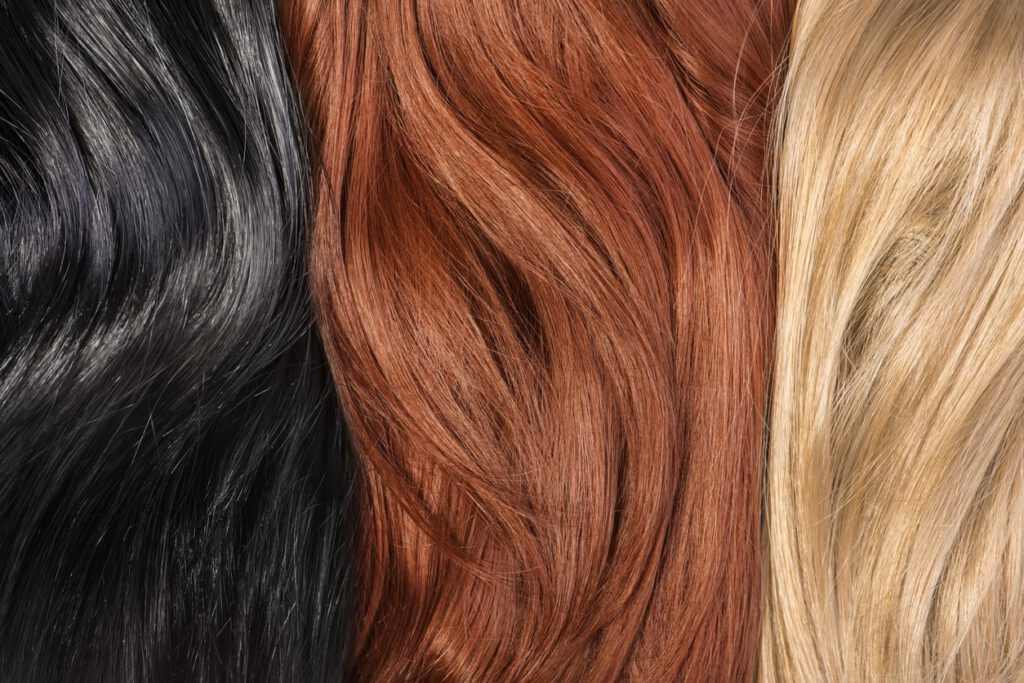A new study has identified hundreds of genes associated with hair color using a predictive model incorporating multiple genes to help explain the shades of blond locks, black manes, brown dos, and red curls among people of European ancestry.
“This work will impact several fields of biology and medicine. As the largest ever genetic study on pigmentation, it will improve our understanding of diseases like melanoma, an aggressive form of skin cancer,” said Professor Tim Spector of King’s College London, one of the lead authors of the paper. “The genes that affect hair color also affect other cancer types, while other pigment genes affect the chances of having Crohn’s and other forms of bowel disease.”
This very large genome-wide association study gives new insight into the genetic influence on human hair and pigmentation, according to the researchers.
Combing through the Data
Led by scientists at Kings College London, the study included contributions from researchers at more than a dozen institutions and data from more than 300,000 people. About half of the data came from individuals who contributed data to the UK Biobank, and the other half came from 23andMe customers who consented to participate in the research.
Published in the journal Nature Genetics, the findings, including identifying 124 genes associated with hair color, were validated using two smaller datasets.
Combining the data, the researchers said that the hundreds of genetic variants they identified help explain about a third of the genetic variation that contributes to whether someone has red hair and about a quarter of the variation for both black and blond hair.

Latitude and hair color
The study also confirms the so-called “North-South cline” in hair color — this is the strong association between hair color and latitude, where darker hair is more common among people with ancestry from European countries in lower latitudes, and lighter locks are more common among those with ancestry from European countries in more northern latitudes. The difference also relates to the sunlight in northern and southern latitudes. Less sunlight means it is harder to produce vitamin D. An adaptation to living in those environments has lighter skin and hair that comes with less pigmentation, which in turn makes it easier to produce vitamin D.
“Besides substantially increasing our understanding of human pigmentation genetics in general, finding these new hair color genes is also important for further increasing the accuracy of hair color prediction from DNA traces in future forensic applications, which can help to find unknown perpetrators of crime,” said Professor Manfred Kayser, of Erasmus University Medical Center in Rotterdam who is also the co-lead author of the paper.
Of all the visible traits among people of European ancestry, hair color is one of the most distinguishing, but hair cells don’t control the color of each strand. Hair strand color is controlled through skin cells called melanocytes that make pigments known as melanin. The amount and type of pigmentation control the color and shade of hair. It’s this connection to the pigmentation process that, in part, explains the substantial overlap between skin pigmentation, hair color, and eye color.
While this study confirms the strong genetic influence on hair color, it also vastly improves our understanding of melanin pigmentation, which, according to the researchers, could lend further insights into diseases and conditions related to the impairment of the pigmentation process.
“While the genetics of hair color is an interesting problem in itself, we hope that better understanding of the biology of melanin pigmentation will be applicable to studies of diseases that interact with pigmentation, such as skin cancer or vitiligo,” said David Hinds, PhD, 23andMe principal scientist and a co-author.



